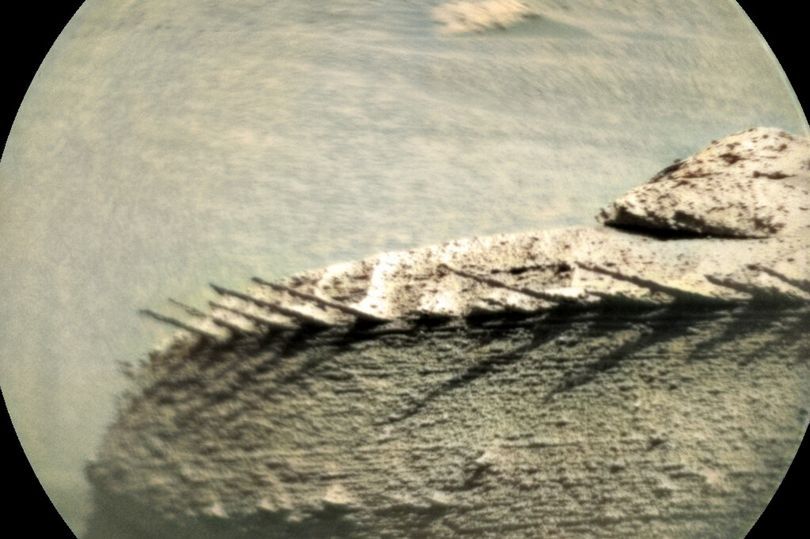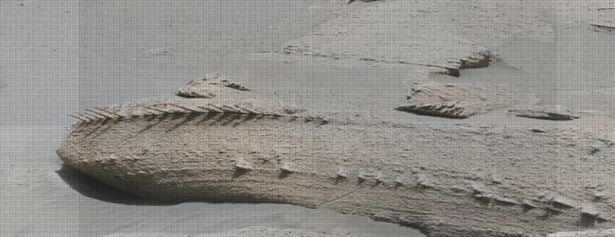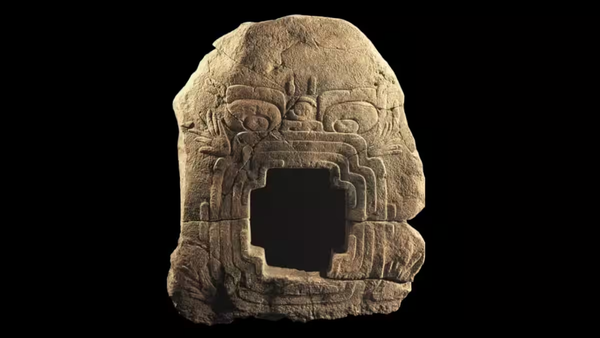NASA's Curiosity rover finds dragon bone-like structure on Mars

NASA's Mars Curiosity rover has captured images that show peculiar, bone-like formations emerging from rocks on the Red Planet. The photographs, taken on Sol 3786 by the rover's mast camera and ChemCam, have prompted enthusiastic discussions on the internet.
Some viewers have speculated that the images depict fossils of fish bones or a dragon-like creature, while others propose that the wind on Mars has gradually eroded the rocks over an extended period.
Astrobiologist Nathalie A. Cabrol remarked that in her two decades of studying Mars, she has never seen a rock as unusual as this one and eagerly anticipates obtaining a microscopic image of it. Another observer mentioned that he had been studying Mars images since the 1997 Sojourner mission and had never seen anything like this before.

Martin Weil, a Twitter user, proposed that the formations were likely due to the wind slowly blowing over loose sand for an extended time, causing every conceivable geometric form to emerge. He suggested that patience would be required to observe such a process.
Dotty commented that the observed structure could be a fossil plant, such as a fir tree branch or fish backbone, which would be unlikely to be a natural rock formation on Earth. Liam Gunn proposed that the formation could be the back of a fossilized Martian dragon, curled up in its final resting place. Other online suggestions included the formation resembling a fragile fish vertebra, fish fossils, a mackerel fillet, or the skeleton of a prehistoric creature.
Curiosity is a rover that is the size of a car and has been investigating the Gale crater on Mars since August 2012 as part of NASA's Mars Science Laboratory (MSL) mission. The rover's mission objectives include the exploration of the Martian climate and geology and preparation for human exploration. The Gale crater, which has a diameter of 154 km and is estimated to be about 3.5-3.8 billion years old, is believed to be a dry lake bed.
Thanks for visiting Our Secret House. Create your free account by signing up or log in to continue reading.





